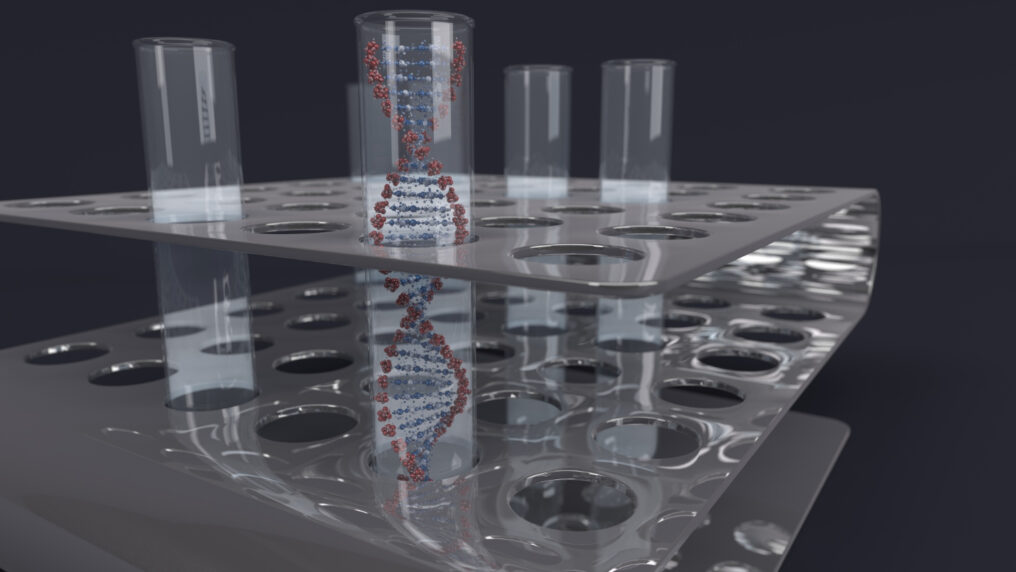
What are the applications of whole plasmid sequencing?
Plasmids are regarded as mobile genetic components existing extra-chromosomally and often carry accessory genes, which give an added advantage to hosts in the ecological niche. Because of that, they play a crucial role in the microbial community by introducing traits and genes into microbial genomes.
However, despite the role they play, technical obstacles limit the study of plasmids. This is where whole plasmid sequencing comes into play.
What Is Whole Plasmid Sequencing?
Whole plasmid sequencing is a process that reads every DNA that is present in a plasmid. Basically, it is a long-read sequencing technique that uses nanopore technology. Hence, it sequences millions of DNA fragments one after the other. As a result, it is possible to learn the characteristics of a full plasmid in a small amount of time.
This type of sequencing is different from Sanger sequencing. The latter is a common practice in plasmid sequencing. Here, experts make use of primers to sequence small DNA segments. Then, they piece those fragments into a collection to form longer sequences.
However, in Sanger sequencing, DNA experts do not analyze the entire plasmid. Here, due to the size of a plasmic, Sanger sequencing does not really help and ends up being an unrealistic method of sequencing.
Basically, Sanger sequencing focuses more on the insert region of the plasmid. Hence, when it comes to checking structural problems in the plasmid, this sequencing is not quite effective. Moreover, it is also not effective if you want to compare the plasmid content to a reference sample.
Understanding Whole Plasmid Sequencing
It is a long-read method of sequencing, which reads DNA present in plasmids. Since the sequencing uses the nanopore technology, the technique is able to simultaneously sequence many fragments of DNA. This makes it very possible to characterize full plasmids within a short period.
While Sanger sequencing is a common technique for sequencing plasmids, it doesn’t analyze the whole plasmid. Plasmids’ size makes the Sanger technique undependable technique for identifying plasmid’s structural issues.
Whole Plasmid Sequencing: What Are Its Major Benefits?
The following are some of the major advantages of Whole Plasmid Sequencing which you can benefit from:
1. You Can Access Long Reads
Library prep chemistry is improving with time. Hence, it is possible to characterize a total circular plasmid with only one long read with the help of whole plasmid sequencing.
In earlier days, it is difficult to perform long reads with high accuracy. This is because, as compared to short-read sequencing, long-read sequencing requires a lengthy and expensive process when you are trying to get the same data.
Thereby, with improvements in laboratory testing and chemistry, it is now possible to perform long-read sequencing faster and more accurately.
2. You Can Skip the Primer Step
In the whole plasmid sequencing process, there is a step where you need to sequence a primer. Basically, primers are short nucleic acid segments (having a base count of 18 to 24). These primers give the sequencer a starting point for DNA synthesis.
Generally, the processes of primer design and manufacturing are additional steps in the sequencing process. Hence, they can have a significant impact on the turnaround time. Therefore, even though a lot of design tools are available, primers still cannot perform well in the sequencing process.
The Nanopore Technology in the Technique
The novel nanopore technological advancement enables researchers to get long sequences of several kilobases. In addition, the technology is powerful enough to characterize and analyze plasmids, which are often small and circular pieces of DNA that replicate genome independently. Other reasons for using this technique include:
- High throughput – The technology allows higher throughput sequencing of a few samples in just one run. Because of that, the technology is suitable for big-scale studies and projects.
- Versatility – This technology is perfect for various kinds of samples, including low-quality and degraded DNA, making it a suitable tool for plasmid analysis.
- High resolution – Nanopore technology provides high-resolution data, which enables scientists to identify and characterize subtle differences in the sequence.
- Long-read lengths – The technology generates long and continuous reads that are important for assembling complex structures or sequencing bigger plasmids
- High accuracy – Nanopore is very accurate, making it suitable for different applications, such as plasmid engineering and quality control.
Applications
Sequencing the whole plasmids all at once and using nanopore technology makes the technique an accurate and powerful method. Because of that, researchers use it in the following applications:
- Plasmid Extraction
The importance of plasmids basically transcends sequencing. The extraction from bacterial cells unlocks doors to many applications. It helps to facilitate the purification of low and high-copy template types. Hence, promoting advancements in genetic engineering, which is complex, broadens the research scope.
- Biotherapeutic Production
DNA plasmids are helpful in biotherapeutic production, where researchers use plasmids as vectors to deliver therapeutic genes. Innovations in the modifications of plasmids, like the Mu-phage SGS sequence, produce promising results. This helps to improve the quality and yield of DNA plasmids.
- Characterization of the Unknown Plasmids
Sequencing of all the plasmids enables the characterization of unknown plasmids. This becomes an invaluable resource for development pathways and progressing research of genes, like gene expression, translation, transcription, and replication.
- Sequencing Those Regions That Are Difficult
In a genetic material or a DNA plasmid, there are certain difficult regions that are complex in nature and structure. Hence, it gets tough when you start sequencing those areas.
Some examples of challenging regions include GC-rich regions and other repetitive sequences. Hence, in many cases, the final data is missing. Hence, with the help of whole plasmid sequencing, it is possible to sequence these areas.
Bottom Line
In conclusion, sequencing all the plasmids at once enables researchers to get comprehensive genetic data without the need for fragment assembly. This, in turn, doesn’t just help to achieve better results. It also helps to minimize the risks of making errors.
Do you have more information to offer regarding whole plasmid sequencing? Please share them in the comments section below.
Read Also:




























